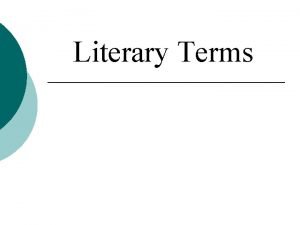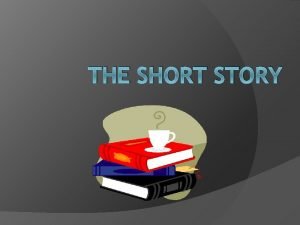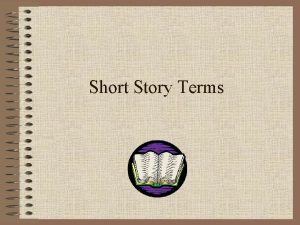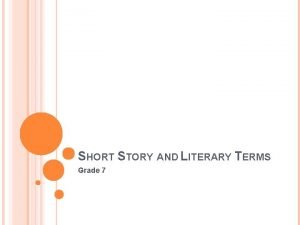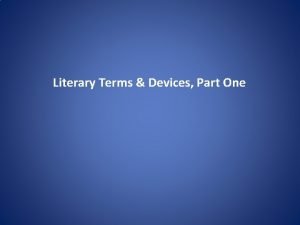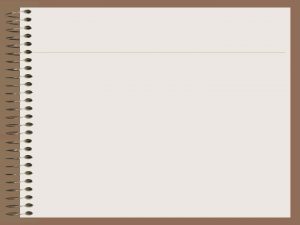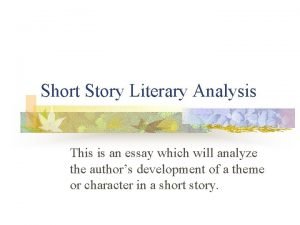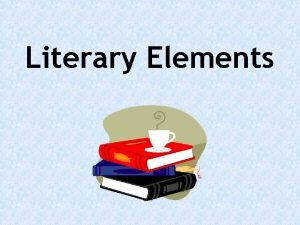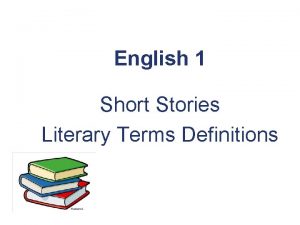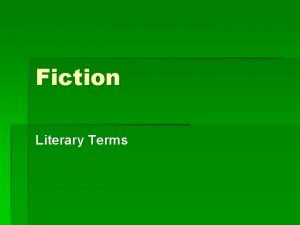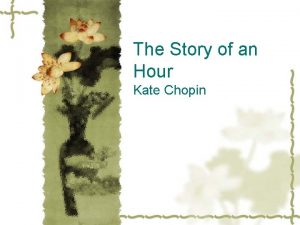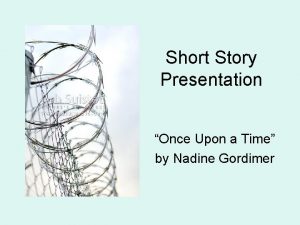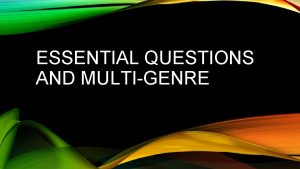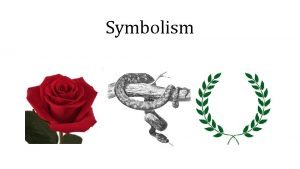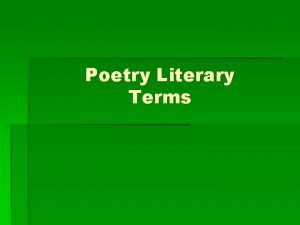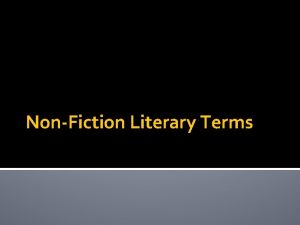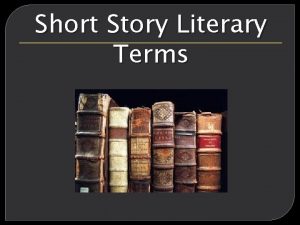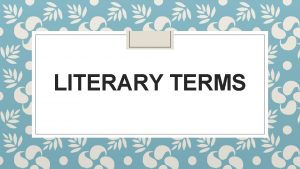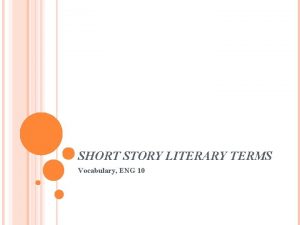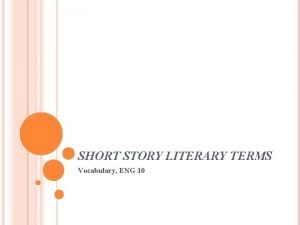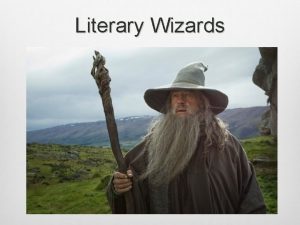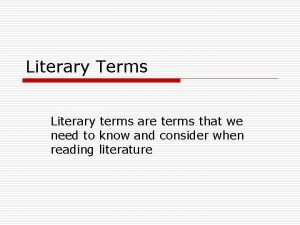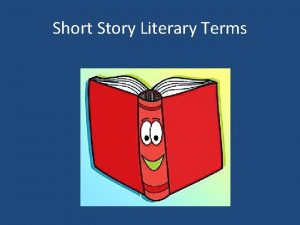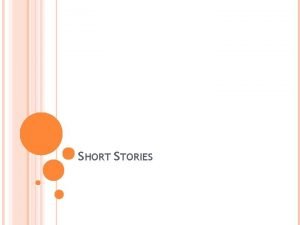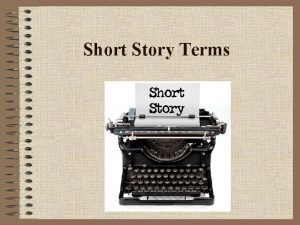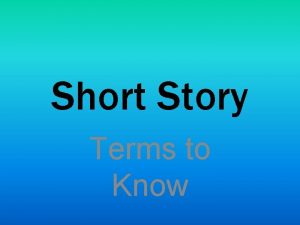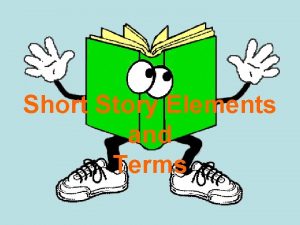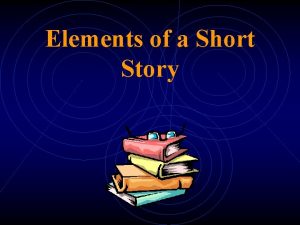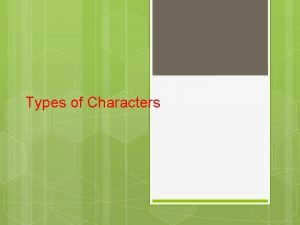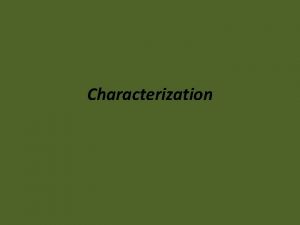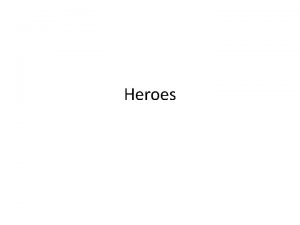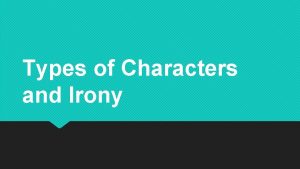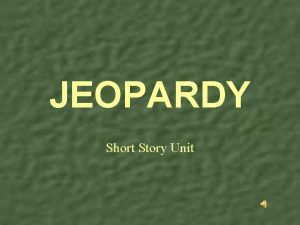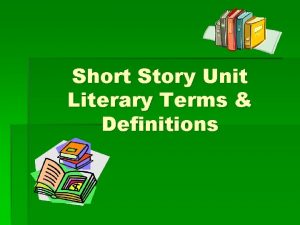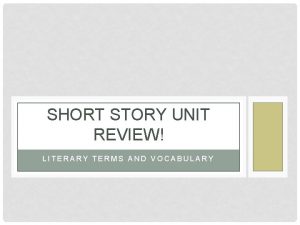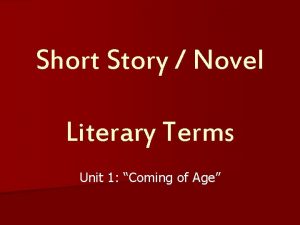Short Story Unit Literary Terms Protagonist n The

























- Slides: 25

Short Story Unit Literary Terms

Protagonist n. The protagonist is the main character in a literary work. n. He/she is NOT necessarily the “good guy”, just the main character

Antagonist n. An antagonist is a character or force in conflict with the main character n. This is NOT necessarily the “bad guy”, just the person or thing that is working against the main character

Foil ncharacter who acts as contrast to another character. – Often a funny side kick to the dashing hero, or a villain contrasting the hero.

Allegory n story or poem in which characters, settings, and events stand for other people or events or for abstract ideas or qualities.

Allusion n. A reference to someone or something that is known from history, literature, religion, politics, sports, science, or another branch of culture.

Oxymoron vs Paradox n. Oxymoron – saying in which two words that contradict are joined – “cruel kindness” / “new classic” / “nearly complete” n. Paradox – contradictory statement that actually contains some truth. – “I’m alone in a crowd a people. ”

Conflict §A conflict is a struggle between opposing forces. §There are two types of conflict: INTERNAL -Conflict that occurs inside the character -man Vs. self EXTERNAL –Conflict that occurs outside of the character -man Vs. man -man Vs. nature -man Vs. society -man Vs. fate - man Vs. tech

Irony n The difference between appearance and reality, expectation and result. n There are THREE kinds of Irony: -Verbal Irony: a word or phrase used to suggest the opposite of its actual meaning -Dramatic Irony: When there is a contradiction between what a character thinks and what the audience knows is true

Irony (continued) -Situational Irony: When an event directly contradicts expectations of the reader or of the characters

Foreshadowing n Clues in a literary work that suggest events that have yet to occur §This literary device helps to create suspense, keeping readers wondering about what will happen next.

Motif n A theme, element, or dramatic situation that recurs in various works Edgar Allan Poe n Darkness n Pain/death

Theme n The central message or insight into life revealed through a literary work – Not a word but a statement – This is the deeper meaning, the main lesson/message/moral that the author hopes the reader will understand at the end of the story

Point of View n The perspective or angle from which a story is being told n There are several types: – First-Person-Point-of-View: When the narrator telling the story is one of the characters, and tells the story as a personal account – Third-Person-Objective-Point-of-View: When the narrator is not one of the characters (has no name, and does not participate in any of the action of the plot)

Point of View (continued) n There also two types of Third-Person-Point- of-View: – Third-Limited -Point-of-View: When the narrator Thirdsees the world through one character’s eyes and reveals only that character’s thoughts – Third-Omniscient -Point-of-View: When the Thirdnarrator sees into the minds of all the characters

Dynamic Character n A character that develops and changes through the course of a story Example: Ebenezer Scrooge at the beginning of “A Christmas Carol”, he is a mean, lonely man that is only interested in money. By the end of the story, he is generous, and interested in the “true spirit of Christmas. ”

Static Character n A character that does not change or develop through the course of the story Example: Wile E. Coyote

Round Character n A character that exhibits many traits, faults as well as virtues Flat Character n A character who seems to have only a single personality trait

Characterization n The way a writer reveals a character’s personality and traits n There are two methods: – Direct Characterization: The author directly states a character’s personality and/or physical traits – Indirect Characterization: Uses a character’s thoughts, actions, dialogue, and feelings, to suggest the character’s traits.

The Five Stages of Plot

Exposition n The first stage of plot! n In the Exposition, the scene is set: – this part of the story introduces the characters, tells the reader the setting, and provides all of the necessary background information

Rising Action n The second stage of plot! n This is where the action usually begins. In the Rising Action, the conflict is introduced (either between characters, or with an outside force). This conflict will build up pressure until the Climax

Climax n The climax is the highest point of conflict in the story!! n Generally, this is the point after which everything is different. All of the pressure or events of the Rising Action have stacked up to this moment, when something must change

Falling Action n This stage begins the downward slope the conflict lessens, and the plot moves towards closure

Resolution/Denouement n In the final stage of plot, the conflict concludes, and loose ends are tied up.
 Tall + short h
Tall + short h Short story in literary terms
Short story in literary terms Conflict in cinderella
Conflict in cinderella Maikling kwento
Maikling kwento Symbol in short story
Symbol in short story Short story grade 7
Short story grade 7 Literary terms conflict
Literary terms conflict Short story definiton
Short story definiton Literary analysis example for a short story
Literary analysis example for a short story Elements of the story cinderella
Elements of the story cinderella Short story literary definition
Short story literary definition The lottery story setting
The lottery story setting This is a brief work of fiction
This is a brief work of fiction The story of an hour by kate chopin characters
The story of an hour by kate chopin characters Once upon a time nadine gordimer setting
Once upon a time nadine gordimer setting Short story unit
Short story unit Clurax
Clurax Short story unit test
Short story unit test Essential questions for english
Essential questions for english Like terms and unlike terms in polynomials
Like terms and unlike terms in polynomials What are like terms
What are like terms Literary elements jeopardy
Literary elements jeopardy Symbol purpose
Symbol purpose What is symbolism.
What is symbolism. Literary terms hyperbole
Literary terms hyperbole Nonfiction literary terms
Nonfiction literary terms

